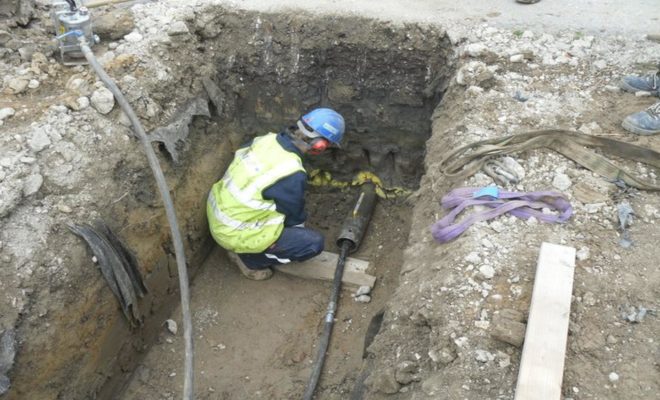What Are The Different Types Of Moling Services?

Moling is a trench-digging technique for laying pipelines, wires, and ducts. Excavating trenches at regular intervals to accommodate the mole is part of this operation. The mole is then inserted into the dirt on the flat face of the pit’s bottom. A similar number of mole-emerging destination pits are dug. Moling has a small footprint and does not necessitate any digging. You can use it on a variety of surfaces.
Moling In the Pipeline Works
Moling is a trenchless pipe laying procedure used in the construction industry. Without digging a trench, Moling can install water pipes and heat pump heating coils.
Moling In The Plumbing Industry
Moling is shooting piping from the launch pit to the reception pit. Because a mole can only fire in a straight line, numerous launching and reception pits may be required. The new plumbing is shot beneath the earth with a mole, minimising surface damage.
Impact Moling
Impact moling services offer a cost-effective and environmentally responsible alternative for many underground installation projects. The mole is a steel cylinder that uses pulsed compressed air to operate like a pneumatic cylinder, causing the mole’s head to pound into the dirt in front of it frequently. The mole displaces the dirt, forming a bore to push the new services. The installation time, interruption, and expense are all reduced with this mole. Mole Pipe is more flexible than the standard corrugated pipe, allowing it to bend around any obstacle without losing its shape. Its easy setup saves time and money, and its small size makes transporting it a breeze. You can install Pipe diameters ranging from 25mm to 150mm in diameter and lengths of up to 20m in one shot (absolute perfect ground conditions).
Water mains, gas lines under highways, portions of cable and ducts, pumped sewer systems, oil lines, existing structures, busy places, environmentally sensitive areas, and waterways can all benefit from trenchless technology. Both domestic and commercial uses are served by impact moling.
Factors Involved In Moling
The price of moling services varies and is determined by several factors. The type of ground you have is one of the most important aspects; other ground forms include clay, gravel, sand, and silt. The number of trees in the mold area is also an issue since they drain all the water from the ground, making even the softest ground like concrete. Every 10 meters, you must make entry and exit holes for the mole, with the cost of reinstatement varying based on the ground. For example, grass has no cost for reinstatement, whereas concrete has a material cost.
Conclusion
The above services will cause less disturbance as you will only need to excavate two pits (a launch and a reception pit) rather than costly and untidy trenching that could be several meters long. They will result in fewer excavations needing reinstalling, allowing the task to be completed at a lower cost.












